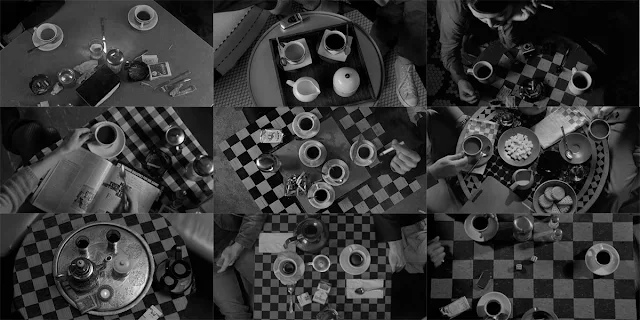 |
| Tom Hiddleston and Tilda Swinton in Only Lovers Left Alive |
With its focus on vital fluids, the vampire genre has always been about sex, especially since at the end of the sexually repressed Victorian era, Bram Stoker gave it one of its definitive expressions in Dracula, where the fear of sexuality gets turned into a fear of a living death. But with the fall of so many sexual taboos in the 20th and 21st century, vampirism itself no longer holds the same kind of terrors. It takes an imagination like Jim Jarmusch's to turn things around, to make the vampires afraid of the living. Only Lovers Left Alive is only partly a post-AIDS fable, in which the substance that sustains a vampire can itself prove deadly. Jarmusch's Adam (Tom Hiddleston) and Eve (Tilda Swinton) are age-old predators reduced in this century to procuring only carefully screened blood, uncontaminated by the misadventures of human beings. He gets his from a hospital researcher who calls himself "Dr. Watson" (Jeffrey Wright), she from an old friend, Christopher Marlowe (John Hurt), whose source we never discover. Jarmusch is casual about providing the backstories of his characters; we have to take them for who and what they are, with only tantalizing hints about their long past and even much of their present lives. We gather that this Marlowe is the historical one, who didn't really die in a tavern brawl in 1593, but lived on in exile where he ghost-wrote the plays of Shakespeare and at one point, presumably late in his life, since he is quite elderly when we see him, became a vampire and moved to Tangier. We never learn, either, why Adam and Eve have gone their separate ways after having been married at least three times in their so-called lives. She, too, lives in Morocco, but he has settled in a desolate, abandoned section of Detroit, where he spends his nights composing music and tinkering with electronics. The plot begins when she comes to visit and they are soon joined by her younger sister, Ava (Mia Wasikowska), an incorrigible troublemaker. But plot isn't much to the point in Jarmusch's film, which is a character study of two sophisticated people who have lived long enough to see the world and human beings (whom he calls "zombies") change around them. It can be said that some of the humor in the movie is a little obvious, sometimes more like a spoof of vampire pictures than the elegant setup of the film deserves. But this is, I think, one of Jarmusch's best films, simply because he has gathered a wonderful company of actors and given them a finely wrought atmosphere to perform in.












_poster.jpg)
